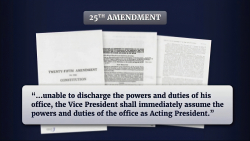India considers Russia’s Su-57 stealth jet, tempted by tech access and fast delivery, but strategic concerns over Moscow’s ties to China and reliance on indigenous development cloud the decision.
Even as India has increased its domestic arms production, New Delhi remains one of the largest buyers of Russian-made military hardware. However, one platform India hasn’t adopted, much to Moscow’s chagrin, is the Sukhoi Su-57.
Russia’s United Air Corporation (UAC) has repeatedly sought to entice New Delhi, including a co-production deal allowing the fifth-generation multirole fighter to be manufactured domestically in India under license. UAC and Rosoboronexport have likely courted India, as its adoption of the fighter would likely prompt other countries to follow suit.
To sweeten the deal, it was reported that UAC has offered to provide India with full access to the export model’s source code, enabling the integration of domestic avionics and other systems and weapons in the Su-57E.
It would be unlikely that any Western aircraft makers could provide the same level of access to a foreign government. However, the United States did allow Israel to incorporate its systems within the Lockheed Martin F-35 Lightning II, which the Israeli Air Force adopted as the F-35I Adir.
India Loses Interest in Buying American Fighter Jets
There is growing speculation this could tip the scales in the Su-57’s favor, even after US President Donald Trump suggested earlier this year that Washington would consider selling the F-35 to India.
Moscow’s proposal would align better with India’s “Atmanirbhar Bharat Abhiyan” strategy to become more self-reliant, and part of the “Make In India” initiative that encourages companies to develop, manufacture, and assemble products domestically. New Delhi has recently approved plans to establish the Advanced Medium Combat Aircraft (AMCA), a domestically built twin-seat fifth-generation fighter. However, it could take years to produce, and access to the Su-57E source code could further jumpstart those efforts.
It would also provide the Indian Air Force with a fighter far sooner, one that might be needed should it find itself in a shooting war with China, or a more serious conflict with Pakistan, which is increasingly operating Chinese-made aircraft.
“Strategically, this deal would allow India to field an indigenous-configured fifth-generation capability in the face of growing Chinese airpower, including China’s J-20 stealth fighters. Financially, the Su-57E’s cost structure remains competitive,” a report from Army Recognition explained.
Can India Trust Russian Fighter Jets?
There is one not-so-insignificant wrinkle that India can’t ignore. Moscow has been forging increasingly closer ties with Beijing. A former Indian Air Force officer warned that Russia could side with China in the event of a war. While former IAF Group Captain Ajay Ahlawat has supported New Delhi maintaining its relationship with Moscow over any pivot to the West, he stressed that India shouldn’t rely on Russia.
He favored India developing an indigenous aircraft over the Su-57E or F-35, and cautioned that a war with China could leave India in a lurch.
“There’s only one glitch in this argument,” Ahlwat wrote in a post on social media in response to calls from other Indian military officials to adopt the Su-57. “If India gets into a shooting war with China, Russia will support China, not India.”
Ahlawat further warned, “A large number of electronic components that go into the Su-57 are sourced from China. The clarion call in summation is correct, I hope we don’t choose the wrong path.”
In a follow-up post, he added, “35, 57 Both bad choices. Domestic AMCA or alternative weapons is a choice, although time and timelines are a challenge.”
India operates a mix of Soviet-designed and Western-made fighters, but its future combat aircraft fleet remains unclear.
About the Author: Peter Suciu
Peter Suciu has contributed over 3,200 published pieces to more than four dozen magazines and websites over a thirty-year career in journalism. He regularly writes about military hardware, firearms history, cybersecurity, politics, and international affairs. Peter is also a Contributing Writer for Forbes and Clearance Jobs. He is based in Michigan. You can follow him on Twitter: @PeterSuciu. You can email the author: [email protected].
Image Credit: Shutterstock/aarrows.
















